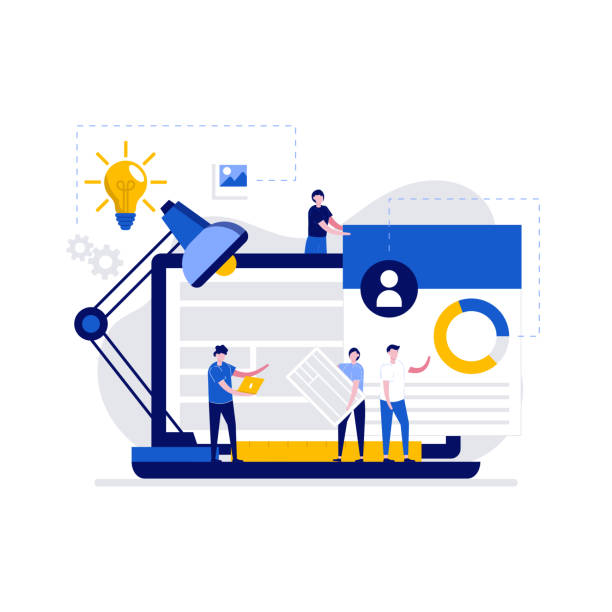Introduction to Website Design with Modern User Interface
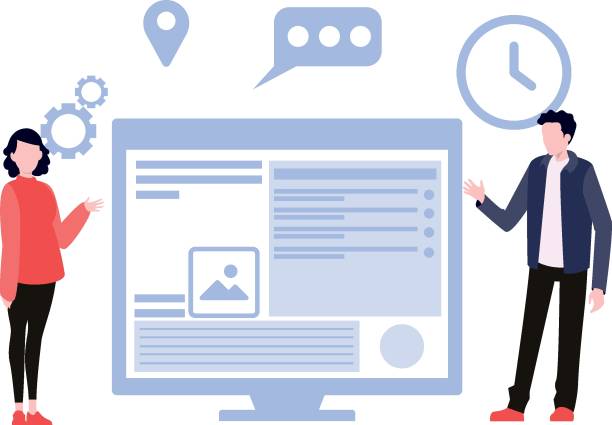
In today’s digital age, website design with a modern user interface is no longer a luxury option, but an undeniable necessity.
Websites have become the primary storefronts for businesses, and how users interact with them directly impacts a brand’s success or failure.
#Modern_User_Interface goes beyond mere aesthetics; this concept includes ease of use, accessibility, and creating an enjoyable experience for the user.
A good User Interface (UI) should be able to attract users from the moment they enter the site and guide them towards their goals.
This is an explanatory approach aiming to clarify the importance of this field for general and expert audiences.
As competition in the online space has intensified, websites with poor user experience quickly lose their visitors.
Therefore, investing in advanced UI design is an investment in the future of your business.
This section provides the foundation for our understanding of why and how recent transformations in website design have occurred.
We are witnessing a paradigm shift from purely functional design to user-centric design, where user needs and expectations are at the forefront.
This trend increasingly highlights the necessity of adopting up-to-date standards and modern techniques to achieve a website design with a modern user interface.
In the past, the main focus was on providing information, but today, user expectations have gone far beyond.
They seek a seamless, smooth, and visually appealing experience that performs equally well across all devices.
This change in expectations has forced designers and developers to fundamentally rethink their approaches.
A modern website must be able to convey its main message in less than a few seconds and encourage the user to continue exploring.
Hence, visual elements, micro-interactions, and loading speed have become powerful tools for user satisfaction.
The ultimate goal of implementing a modern user interface is not just beauty, but to create a smooth and pleasant path for the user to easily achieve their goals, whether it’s buying a product, finding information, or communicating.
Disregarding these issues can lead to high bounce rates, reduced engagement, and ultimately, the loss of potential customers.
This introduction attempts to explain the growing necessity and importance of website design with a modern user interface for every individual and business operating in the online space.
Further on, we will delve into the principles, challenges, and trends in this field.
Are you bothered by losing customers due to your online store’s outdated appearance or slow speed? Rasawp’s expert team solves these problems with professional e-commerce website design!
✅ Increase customer trust and your brand’s credibility
✅ Blazing speed and excellent user experience
Get a free consultation with Rasawp now ⚡
Key Principles in Modern User Interface Design

To achieve a website design with a modern user interface, a set of fundamental principles must be adhered to, ensuring efficiency, aesthetics, and ease of use.
#Modern_UI_Principles include simplicity, consistency, responsiveness, and quick feedback.
Simplicity means removing unnecessary elements and focusing on the main content so that the user can access the information they need without confusion.
This principle states that every element on the page must have a clear purpose and contribute to the user experience.
A simple UI hides backend complexities from the user and smooths the path to their goal.
For example, registration forms that only ask for essential information and clearly highlighted call-to-action (CTA) buttons are examples of simplicity in design.
Consistency in design means maintaining visual and functional uniformity throughout the website; that is, fonts, colors, and the arrangement of elements should be consistent across all pages to create a fluid user experience.
This consistency makes the user feel familiar and comfortable with the site and allows them to quickly find their way.
Imagine if every page of your site was designed with a different style; this would quickly lead to user confusion and dissatisfaction.
This is an educational approach for designers and developers to deliver high-quality websites by observing these rules.
Responsive Design is another vital principle that ensures your website displays correctly and maintains its functionality on any device, from desktops to mobile phones and tablets.
Given the significant increase in mobile device usage for internet access, ignoring this principle can lead to losing a large segment of the audience.
Quick feedback means the system should respond immediately to user actions (such as clicking a button or filling out a form) so that the user feels in control.
This feedback can be visual (like a button changing color), auditory, or textual (like a successful operation message).
Additionally, Accessibility is crucial to ensure that people of all abilities can use the website.
This includes providing keyboard navigation options, alternative text for images, and sufficient color contrast.
Adhering to these principles in the user interface optimization process results in a site that is not only beautiful but also efficient and user-friendly.
These principles are the cornerstone of every website design with a modern user interface project, and ignoring any of them can compromise the user experience and lead to a loss of user trust, ultimately impacting business performance.
Proper implementation of these principles creates a website that is both aesthetically pleasing and functionally flawless.
The Role of User Experience (UX) in Modern Design

The role of User Experience (UX) in shaping a website design with a modern user interface is undeniable.
#UX_and_UI are two sides of the same coin; while UI deals with the appearance and visual interactions, UX encompasses the user’s entire journey from entry to exit from the site, aiming to create an overall positive and meaningful experience.
This includes extensive user research, a deep understanding of user needs and behaviors, logical information architecture design, smooth interaction design, and then usability testing to ensure effectiveness.
Specialized content in this area should clarify how a deep understanding of user behaviors, needs, and goals can lead to more intuitive and effective user interfaces.
For example, if a user is looking for specific information, UX design must ensure that this information is easily accessible with the fewest clicks, even before the UI reaches the visual design phase, UX determines the structure and flow of the site by designing wireframes and prototypes.
This is what gives website design with a modern user interface its soul and distinguishes it from merely beautiful design.
Without strong UX, even the most beautiful UI may not function properly and might frustrate users, because the navigation path is not logical, or information is not well-organized.
Close collaboration between UX and UI designers is vital.
UX designers provide valuable insights to UI designers, based on user research data and behavior analysis, so that UI designers can craft visual and interactive elements that precisely meet user needs and contribute to business goals.
This is an iterative and feedback-driven process, where designs are continuously improved based on real data.
For a better understanding, refer to the table below, which shows the key differences between UI and UX and clarifies how they collaborate to create a seamless user experience:
| Feature | User Interface (UI) | User Experience (UX) |
|---|---|---|
| Main Focus | Site’s look and feel (aesthetics, visual interactions) | User’s feeling when using (efficiency, satisfaction, accessibility) |
| Ultimate Goal | Creating attractive and usable interfaces | Solving user problems, creating a meaningful and enjoyable experience |
| Key Question | How does it look and how do we interact with it? | How does it work, how useful is it, and how does the user feel? |
| Outputs | Visual interfaces, buttons, icons, layout, animations | User journey maps, wireframes, prototypes, user test results |
This synergy shows that to create a truly outstanding website, both UI and UX aspects must progress in parallel and in harmony.
Success in website design with a modern user interface directly depends on how these two concepts are integrated, so that visual beauty is inextricably linked with efficiency and user satisfaction.
Technological Trends in Modern UI
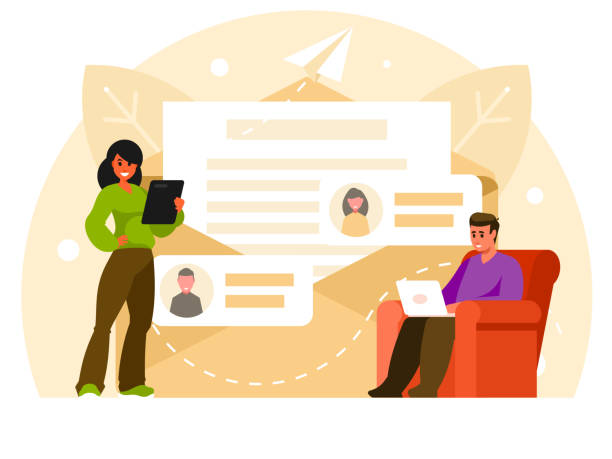
The world of website design with a modern user interface is rapidly evolving, with new technological trends emerging daily that revolutionize the user experience.
#Technological_UI_Trends include Artificial Intelligence (AI), Virtual Reality (VR), and micro-interactions, which currently play a significant role.
Artificial Intelligence (AI), with its advanced capabilities in machine learning and natural language processing, can elevate user interaction to an unprecedented level by personalizing content and providing intelligent suggestions.
AI-powered chatbots are no longer just answering frequently asked questions; they can actively guide users by analyzing their history and preferences, significantly improving the search and shopping experience.
Recommendation systems, like those seen on movie and music streaming platforms, are also clear examples of using AI to create personalized user experiences.
This is news content that covers the latest innovations in this field and illuminates the future outlook.
Virtual Reality (VR) and Augmented Reality (AR) also offer unparalleled opportunities to create immersive experiences on websites, especially in areas such as e-commerce, education, and tourism.
Imagine being able to view a product in 3D space, virtually try on clothes, or simulate furniture in your home before buying.
These technologies take interaction with products and services to a whole new level, blurring the line between the real and digital worlds.
Furthermore, micro-interactions, which are small, subtle movements such as a button changing color when hovered over, a small loading animation, or a checkmark after submitting a form, seem insignificant but significantly improve the user experience and convey a sense of dynamism and responsiveness to the user.
These small but vital details help websites appear lively and engaging, ultimately contributing to increased user satisfaction.
Advances in web technologies like WebGL for 3D graphics and WebAssembly for performance improvement provide countless possibilities for implementing these trends in website design with a modern user interface.
Awareness of these technologies and their intelligent application can distinguish your website among competitors and create an unforgettable experience for visitors, and this is exactly what a modern user interface aims for.
Dissatisfied with the low conversion rate of visitors to customers on your e-commerce site?
Solve this problem forever with professional e-commerce website design by Rasawp!
✅ Increase visitor-to-customer conversion rate
✅ Create an excellent user experience and build customer trust
⚡ Get a free consultation
Visual Elements in Modern UI Design

Visual elements are the backbone of any website design with a modern user interface and play a vital role in attracting users and conveying brand messages.
#UI_Visual_Elements include typography, color palette, images, and icons, each impacting the user’s visual experience in its own way.
Typography not only improves content readability but can also reflect the brand’s personality and identity.
The selection of appropriate fonts (such as Sans-serif for better readability on screens), font size, line and paragraph spacing (line-height and letter-spacing) all contribute to the overall readability and aesthetics of the site.
Visual hierarchy created through different font sizes and weights (bold, regular) helps the user quickly identify the most important information.
Color palette is also of great importance; colors evoke specific emotions and can have a profound impact on the user’s perception of your brand.
A color can convey a sense of calm, excitement, or trust.
The choice of color combinations should not only be aesthetically pleasing but also consider aspects of color psychology as well as accessibility (e.g., sufficient contrast for visually impaired users).
A comprehensive guide in this area helps designers choose intelligent and purposeful color combinations that are both attractive and align with the website’s goals.
Using high-quality images and icons relevant to the content not only enriches the site visually but also aids in better understanding of information.
Images can tell a story, convey emotions, and instill a sense of credibility and professionalism in the user.
Icons also act as visual guides, occupy less space, and help users with navigation, provided they are correctly chosen and their meaning is universal.
Maintaining a balance between these elements, providing sufficient whitespace for elements to breathe, and appropriate visual hierarchy all significantly contribute to creating a pleasant visual user experience on a modern site.
A strong visual design is the first thing that catches a user’s attention and can determine whether the user stays on your site, continues exploring, or not.
These elements together create a pleasant and efficient user interface for modern websites.
Interactive and Dynamic Elements in UI
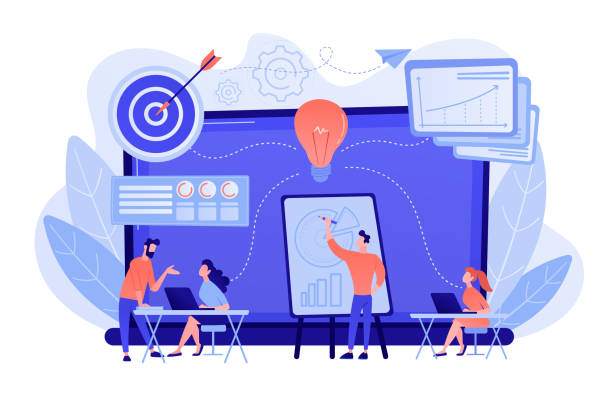
Interactive and dynamic elements constitute the soul of a website design with a modern user interface, transforming the website from a static page into a lively and dynamic experience.
#UI_Interactive_Elements include animations, transitions, hover effects, and visual feedback.
Animations can be used to attract attention, guide the user through complex paths, or create a sense of fun and enjoyment.
For example, a small animation when adding a product to the shopping cart can make the experience more enjoyable and assure the user that their action was successful.
Animations should be purposeful, and excessive use of them, which leads to distraction or slow site performance, should be avoided.
Subtle micro-animations that execute quickly and smoothly have the best effect.
This is a fun aspect of design that helps increase user engagement and loyalty, but it must be used carefully and with a clear purpose.
Transitions, or smooth changes, create a sense of fluidity and continuity when switching between states or pages, preventing abrupt jumps.
These transitions can include fading, sliding, or zooming elements, which help the user better understand changes on the page and reduce confusion.
Hover effects, such as changing button colors, enlarging images, or displaying additional information when the mouse moves over elements, provide immediate visual feedback to the user and make interaction more intuitive.
These effects signal to the user that the element is clickable or interactive.
Visual and auditory feedback (such as a click sound or a green checkmark after form submission) also assure the user that their action was successful and help reinforce the user’s sense of control over the system.
Intelligent use of these elements not only makes the site’s user interface look more attractive and creates a more enjoyable experience, but also helps improve the user’s understanding of the site’s functions and capabilities.
However, it is important to avoid overusing animations and effects, as they can slow down the site and distract the user.
The main goal is to increase efficiency and user satisfaction, not merely to showcase technology and visual capabilities.
A website design with a modern user interface strikes a delicate balance between aesthetics and functionality, and interactive elements play a key role in this balance, bringing your site to life.
Performance and Optimization in Modern UI
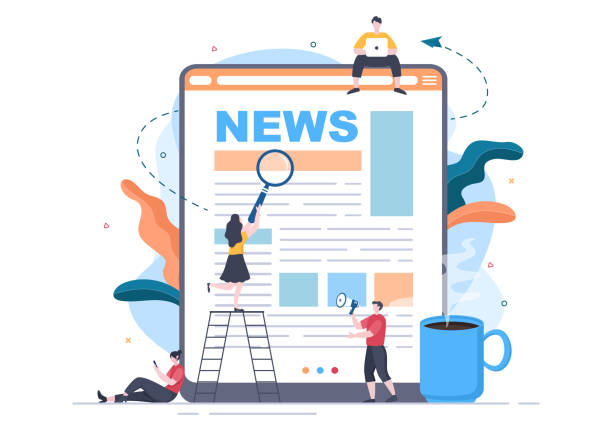
Performance and optimization are among the most important factors in website design with a modern user interface, directly impacting user experience and site ranking in search engines.
#UI_Performance includes loading speed, compatibility with various browsers, and optimization for mobile devices.
Website loading speed is a critical factor in retaining users; studies have shown that users quickly leave a site if loading times are long.
Every second of delay can mean losing a significant percentage of visitors.
Therefore, optimizing images (compression and use of next-gen formats like WebP), using efficient HTML/CSS/JavaScript code, and leveraging CDN (Content Delivery Network) to reduce server latency are essential.
This is an analytical approach that examines data and performance metrics to identify the best optimization strategies so the site loads at lightning speed.
SEO (Search Engine Optimization) also plays a vital role in site visibility, and modern UI helps improve it by providing clear structure, easy navigation, and high-quality, mobile-optimized content.
Google and other search engines consider user experience as an important ranking factor and penalize slow or unusable mobile websites.
Furthermore, Accessibility is of high importance to ensure that people of all abilities can use the website.
This includes using alt tags for images, semantic HTML structure, providing keyboard navigation options, and ensuring sufficient color contrast, all of which are part of website design with a modern user interface.
Finally, continuous testing and optimization are essential to ensure optimal performance under all conditions.
Using tools like Google Lighthouse and PageSpeed Insights is recommended for continuous site performance review and improvement.
The table below shows some key performance and optimization metrics that should be considered in every website design with a modern user interface project:
| Metric | Explanation | Importance in Modern UI |
|---|---|---|
| Load Time | Time required for the web page to fully load | Reduced bounce rate, improved user experience, key SEO factor |
| LCP (Largest Contentful Paint) | Time to render the largest visible content element for the user | Primary visual experience metric and part of Google’s Core Web Vitals |
| FID (First Input Delay) | Site’s response time to the first user interaction (e.g., click) | Evaluates site responsiveness and interactivity in the initial phase |
| CLS (Cumulative Layout Shift) | Amount of unexpected visual element shifts during page loading | Prevents unexpected changes and improves visual stability for the user |
| Mobile-Friendliness | Usability and correct display of the site on mobile devices and tablets | High importance in SEO and access for a large segment of internet users |
Continuous effort to improve these metrics ensures the long-term stability and success of the website and is an integral part of a website design with a modern user interface.
By adhering to these principles, one can ensure that the website is not only beautiful and user-friendly but also performs at the highest level.
The Future of Web Design and User Interface
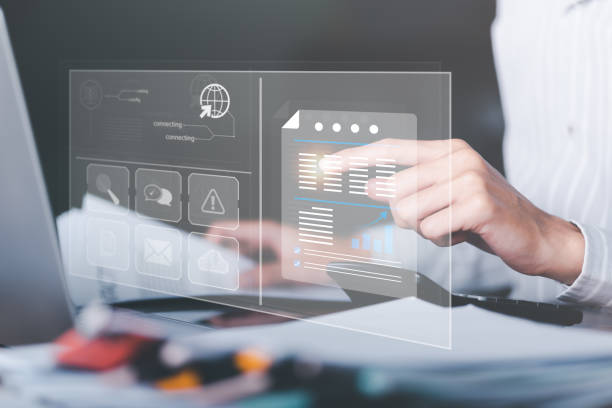
The future of website design with a modern user interface is full of exciting potential and revolutionary changes that will transform how we interact with the digital world.
#Future_UI_Design is moving towards more personalized, immersive, and AI-driven experiences.
We will witness the emergence of 3D websites and mixed reality experiences that blur the line between the physical and digital worlds, allowing interaction with content in a reality-like space.
This is thought-provoking content that explores possibilities that may materialize in the near future and prompts designers to think about new horizons.
Voice assistants and conversational user interfaces (Voice UI) will also play an increasing role, allowing users to interact with websites and applications simply by speaking.
This is a great advantage, especially for accessibility and ease of use for individuals who may have difficulty with traditional visual interfaces.
The main challenge here is accurately understanding user intent through natural language and providing precise and helpful responses.
Artificial Intelligence (AI), with its machine learning capabilities, will be able to analyze user behaviors and preferences and dynamically optimize user interfaces for each individual.
This means the end of “one-size-fits-all” design and the beginning of an era of fully personalized user interfaces where each user will have a unique experience tailored to their needs.
Additionally, greater emphasis is expected on sustainability and green design in the web; websites that are more energy-efficient, use fewer resources, and have a lower environmental impact will emerge as an important factor in responsible web design.
Web developers and designers must prepare themselves for these changes and keep their skills up-to-date to remain leaders in this competitive and evolving space.
Website design with a modern user interface in the future will focus less on static appearances and more on fluid and adaptable experiences.
These developments will not only be challenging but will also provide unparalleled opportunities for innovation and the creation of websites beyond our current imagination, pushing the boundaries of creativity.
Disappointed with your e-commerce site’s low conversion rate? Rasawp transforms your e-commerce site into a powerful tool for attracting and converting customers!
✅ Significantly increase visitor-to-buyer conversion rate
✅ Unparalleled user experience to boost customer satisfaction and loyalty⚡ Get a free consultation from Rasawp!
Challenges and Solutions in Modern UI Design

Despite all the advantages of website design with a modern user interface, this field also faces its own specific challenges, overcoming which requires an intelligent and strategic approach.
#Modern_UI_Challenges include maintaining a balance between aesthetics and functionality, compatibility with various devices and browsers, and managing the increasing technological complexities.
One of the biggest challenges is maintaining simplicity and minimalism while offering advanced features and rich interactions.
Adding too many interactive elements, heavy animations, or complex visual effects can lead to clutter, slow site loading, and user confusion, which compromises the user experience.
The solution is to always adhere to the principle of “Less is More” and only add elements that genuinely add value to the user experience and have a clear purpose.
Design should be purposeful, not merely for aesthetic.
This is specialized content that provides practical solutions for these challenges and offers a practical perspective.
Compatibility with various devices, especially mobile, and different browsers (like Chrome, Firefox, Safari, and Edge) requires responsive design and repeated testing across different screen sizes and user environments to ensure that the website displays and functions well on all platforms.
This requires both automated and manual testing tools.
Managing technological complexities is another challenge; with the emergence of new JavaScript frameworks and libraries (like React, Vue, Angular) and CSS tools (like Tailwind, Bootstrap), choosing the right tools and keeping up with the latest trends has become difficult.
The solution is for design and development teams to continuously educate themselves, participate in conferences, and use Agile methodologies for greater flexibility and faster iterations in the design process.
Also, collecting user feedback and conducting regular usability testing should be done to identify and resolve issues and continuously improve the design.
These measures ensure that website design with a modern user interface is not only beautiful but also efficient, resilient to challenges, and ready for the future, and can meet user expectations.
Case Studies and Success Stories
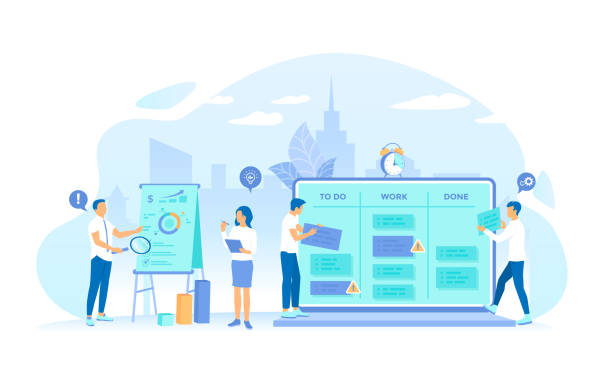
To gain a deeper understanding of the potential of website design with a modern user interface, examining case studies and global success stories is very enlightening.
#Modern_UI_Examples demonstrate how leading companies have transformed their user experience and significantly increased customer loyalty by implementing innovative and user-centric interfaces.
For example, platforms like Airbnb have created an unparalleled user experience for booking accommodations with clean visual design, intuitive navigation, and high-quality images of lodging options.
This platform utilizes minimalist design that focuses on content and the user, and by eliminating any visual distractions, it has made the process of finding and booking accommodation very simple and pleasant.
This educational approach shows how commercial goals can be achieved by combining aesthetics, functionality, and a deep understanding of user needs.
Another example is music streaming services like Spotify, which have attracted millions of users with personalized user interfaces, AI-powered recommendations (based on listener tastes), and seamless integration across various devices.
The UI of this platform, focusing on album covers, attractive color palettes, and fluid animations during music playback or switching between pages, offers an entertaining and immersive experience that encourages users to spend hours using it.
Furthermore, major news websites like The New York Times, despite a vast amount of content, have managed to provide the best possible readability and access to news through thoughtful design and a clean user interface.
They use excellent typography, ample white space, and a logical navigation system to allow users to move effortlessly between different articles.
Website design with a modern user interface in these cases has gone beyond mere aesthetics and has become a powerful tool for increasing user satisfaction and retention, directly leading to business success.
These examples prove that investing in a strong and user-friendly UI yields significant returns in the form of increased conversions, reduced bounce rates, and improved brand loyalty.
By drawing inspiration from these successful examples and thoroughly analyzing their strengths, proven principles and techniques can be applied to your projects to achieve similar results.
This section serves as a practical guide for designers and businesses to realistically view the potential of modern web design and benefit from the experiences of others.
Frequently Asked Questions
| Question | Answer |
|---|---|
| What is a modern user interface? | A modern user interface refers to a design that uses new trends, simplicity, excellent user experience, and attractive visual elements. |
| Why is using a modern user interface important in website design? | It attracts and retains more users, creates a sense of professionalism, improves user experience, and increases conversion rates. |
| What are the main features of a modern user interface? | Simplicity, use of sufficient white space, readable typography, attractive and harmonious colors, subtle animations, and responsive design. |
| How does responsiveness relate to a modern user interface? | Responsive design is an essential feature in a modern user interface that ensures the site displays well on all devices (mobile, tablet, desktop). |
| What is the role of typography in modern user interface design? | Selecting appropriate fonts and using them correctly enhances readability and contributes to the site’s beauty and visual identity. |
| What is White Space and why is it important in modern UI? | It is the empty space between different elements on the page that helps improve readability, user focus, and creates a sense of cleanliness and order. |
| What is the benefit of using animations in modern user interface design? | Subtle and purposeful animations can attract user attention, improve interaction, and make information transfer more engaging. |
| How can User Experience (UX) be improved alongside a modern user interface? | By understanding user needs, simplifying navigation paths, providing appropriate visual feedback, and easy testability. |
| Does a modern user interface always mean using bright colors? | No, a modern user interface can use a variety of color palettes, including dark colors; the important thing is to choose harmonious colors suitable for the brand. |
| What are the current trends in modern user interface design? | Use of Dark Mode, Neumorphism, Glassmorphism, scroll-based animations, and minimalist design. |
And other services of Rasawp Advertising Agency in the field of advertising
Smart Digital Advertising: A combination of creativity and technology to attract customers through marketing automation.
Smart Advertising Campaign: Revolutionize customer acquisition with optimized key pages.
Smart Marketing Automation: Professional optimization to increase click-through rates using attractive UI design.
Smart Digital Advertising: Professional optimization for user interaction using attractive UI design.
Smart Link Building: A professional solution to increase website traffic with a focus on customizing user experience.
And over a hundred other services in online advertising, advertising consulting, and organizational solutions
Internet Advertising | Advertising Strategy | Advertorials
Resources
New Trends in Website DesignPrinciples of Modern User Interface DesignDevelopment of Modern and Responsive WebsitesNew Approaches in Web Design
? Rasawp Digital Marketing Agency, by offering comprehensive and innovative solutions, paves the way for the growth and brilliance of your business in the digital world. From website design with a modern user interface and search engine optimization to targeted advertising campaigns, we are committed to building a brilliant future for your brand.
📍 Tehran, Mirdamad Street, next to Bank Markazi, Kazerun Jonubi Alley, Ramin Alley, No. 6


